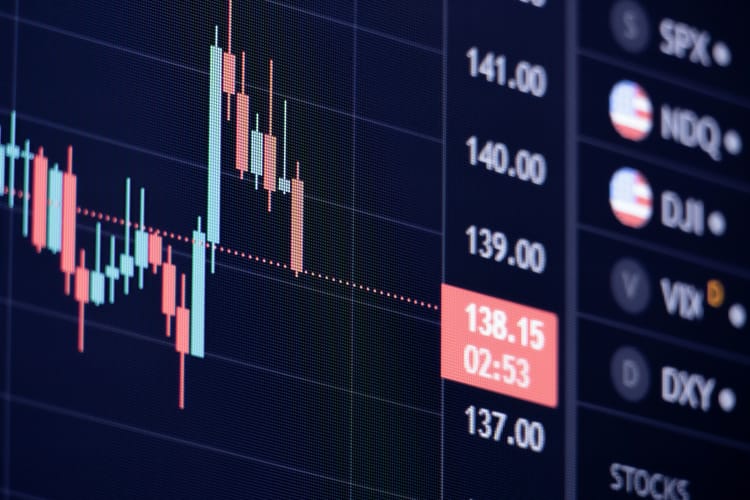Five Simple Steps to deal with trading losses

Imagine On October 26th, 2023, you opened a short position on the JPY/USD currency pair at 147.50, expecting the dollar to strengthen against the yen due to rising US inflation and hawkish Fed statements. You used a 30% margin with a stop-loss set at 148 and a profit target of 146. However, by November 3rd, the price had risen to 149, triggering your stop-loss and resulting in a loss.
So,
Once you discuss this loss in your circle of friends, family or mentors for this matter,
What will be the most probable response you will get?
“Losses are part of trading, Take it as a lesson and move on."
Yes,
Most of the people you meet in the trading world know that loss is also an opportunity to learn,
But how can we learn from this loss? What exactly should you do to learn "the Lesson."
Few people will be able to tell you the step-by-step approach
In the blog post below, we will try to define this approach to dealing with losses
How to Deal with Trading Losses?
Alright,
that trade didn't go as planned. Let's dissect what happened, identify any errors, and put together a concrete plan to prevent similar losses in the future.
So, dealing with trading losses constructively involves following the steps
- Gather the facts:
- Analyze your decision-making
- Evaluate external factors
- Identify the root cause
- Learn and adapt
Let's break down each step in detail for further understanding
Step 1: Gather the facts
This first step essentially sets the stage for your analysis
Just knowing "I lost on X trade" isn't enough
You must go beyond remembering the basic outcome (win or loss) and gather specific details of what went wrong. These specific details may focus on
Date and time: This may help identify potential news events or market shifts around the trade. When did the trade happen? Were there any major news events around that time? (Think: press conferences, economic releases)
The asset traded: Understanding the asset's behavior and volatility is also crucial. Which stock, currency, or commodity did you trade? Was it behaving unusually or experiencing sector-specific news?
Entry and exit prices: Analyze adherence to your Trading strategy and identify potential risk management issues. Did you stick to your planned entry and exit points, or did emotions cause you to deviate?
Position size: Evaluate whether the position size aligns with your risk tolerance and risk management plan. Was the amount you risked appropriate for your overall portfolio and risk tolerance?
Strategy used: Reflect on its effectiveness and suitability for the market conditions. Did the strategy suit the market conditions, or was it a mismatch? Were there any execution errors?
Similarly, you may also need to focus and take notes;
Market context:
Major news events: Did any economic data releases, company announcements, or geopolitical events impact the market sentiment during your trade?
Sector performance: How was the specific sector your asset belongs to performing? Was it outperforming or underperforming the broader market?
Overall market sentiment: During your trade, was the market bullish, bearish, or neutral? Did it shift significantly during your holding period?
Did you notice?
How detailed this information gathering part can be?
By the way,
You may say that the list you get by answering these questions may become quite daunting, and you may quickly lose focus here.
But the point to note here is,
It may look very detailed at first sight,
But once you have started gathering the details in this manner for each trade,
It will become a "second habit" to you.
This repeat of the same procedure may also allow you to conclude in less time in future as well.
So,
Coming back to the topic,
Gathering these "clues," you can build a complete picture of the trade and understand what went wrong.
Was it a strategic flaw (wrong entry point, unsuitable strategy)? Emotional trading (panic selling, ignoring stop-loss orders)? Or an unforeseen external event (sudden news affecting the market)?
Example Continued:
If we continue the example from the start of this blog,
Once you have gathered all the details, your findings may look like this;
- Date: October 26th, 2023
- Asset: JPY/USD
- Entry price: 147.50
- Exit price: 149 (triggered by stop-loss)
- Position size: 30% margin
- Strategy: Mean reversion based on technical indicators and fundamental analysis
- Indicators: Bollinger Bands, RSI
- Market context: Rising US inflation, hawkish Fed statements, Bank of Japan intervention rumors.
Step 2: Analyze your decision-making:
This is where you delve deeper into your actions and thought process.
But,
In this step, the key is,
To be honest with yourself
Because honest answers may give some very detailed insights into your trading strategies.
You may ask yourself these questions about;
Following the Trading Plan: Did you stick to your predetermined entry, exit, and risk management rules?
Because deviations can lead to costly mistakes, you must analyze the reasons for deviating and the subsequent consequences.
You also have to do
Emotion vs. Objective Analysis
Were your decisions based on sound analysis and strategy or influenced by emotions like fear or greed? Emotional trading often leads to poor choices.
Take a holistic view of the situation
Considering All Factors
Before entering a trade, did you incorporate technical indicators, fundamental analysis, and risk management practices? A holistic approach helps make informed decisions.
Risk Management
Did you set realistic profit targets and stop-loss orders to limit potential losses? Proper risk management is of utmost importance for protecting your capital.
And the most important of them all,
Impulsive Decisions
Did emotions cloud your judgment during the trade, leading to rash actions?
The point here to note is;
This Self-Reflection helps you Identifying Biases
that might influence your trading decisions. Recognizing these biases is the first step towards mitigating their Impact.
Also,
By analyzing your decisions, you can pinpoint areas where you can improve your trading strategy, discipline, and overall approach.
Example Continued:
So, Continuing our example for Step 2,
You may find that you have the following questions and answers in front of you,
Did you follow your trading plan? You entered and exited according to your stop-loss and profit target parameters. However, you might have ignored your trading plan's risk management guidelines due to overconfidence.
Were your entry and exit points based on your strategy? Partially. The technical indicators suggested shorting, but you might have missed conflicting signals from the RSI indicating overbought conditions.
Did you consider all relevant factors? You considered the Fed and inflation but underestimated the Impact of potential Bank of Japan intervention to weaken the yen.
Did you set realistic profit targets and stop-loss orders? The stop-loss protected your capital, but the profit target might have been too ambitious considering potential volatility.
Did you manage your emotions? The scenario suggests overconfidence leading to ignoring your trading plan, indicating potential emotional influence.
Step 3: Evaluate external factors:
Acknowledging external factors that can impact your trades is also very important, even when outside your control.
External Factors may include;
Unforeseen Events
Sometimes, news releases, economic shifts, or other unexpected events can significantly move the market, affecting your trades regardless of your strategy. So,
Staying updated on current events and prepared for potential volatility is crucial.
If not for macro events, you may face disturbance due to some minor issues as well, like,
Technical Glitches
Technical issues with your broker or data provider can lead to missed opportunities or incorrect information, impacting your trading decisions.
Sometimes, even if you make sound decisions based on your analysis
Broader Market trends
It may be working against you.
Understanding these trends and their potential Impact can help you adjust your strategy accordingly.
What value do you get from this step?
Performing this step,
prevents you from placing unnecessary blame on yourself for losses beyond your control. This helps maintain a neutral and objective perspective, which is crucial for long-term success.
Example Continued:
So, Continuing our example for Step 3, You may have noticed some
Unforeseen events:
Yes, the Unexpected Bank of Japan intervention announcement sent the yen surging, significantly impacting the market.
At the same time, you may also have noticed Your trading platform experienced a brief lag during the intervention announcement, delaying your exit and potentially worsening the loss. This exemplifies how trading glitches can also impact trading.
Step 4: Identify the root cause
Time to get the results of your findings!
In this step,
based on your analysis, you must pinpoint the core reason behind the loss.
But to get to the core reasons,
You have to
Dig Deeper
Don't just settle for surface-level reasons like "unforeseen events" or "poor entry point." Ask yourself more profound questions about the underlying cause.
Consider Strategy Flaws.
Analyze if your strategy itself has fundamental issues like lack of adaptation, unsuitability for current market conditions, or insufficient testing.
Evaluate your Analysis.
Did you misinterpret technical indicators, overlook crucial fundamental factors, or rely on faulty data? Consider diversifying your analysis tools and honing your interpretation skills.
Also, have a look at
Your level of Adaptability
Were you caught off guard by changing market conditions and failed to adjust your strategy accordingly? Maintaining flexibility is vital for navigating volatility.
&
Emotional Control
Did emotions like fear or greed influence your decisions, leading to impulsive actions? Recognizing and managing emotions are essential for disciplined trading.
Benefits of Identifying the Root Cause:
- Targeted Improvement: Identifying the specific issue allows you to address it directly. Instead of vague adjustments, you can make targeted changes to your strategy, analysis, or emotional control.
- Preventative Measures: By understanding the root cause, you can implement measures to prevent similar losses in the future. This proactive approach leads to long-term improvement.
- Realistic Expectations: Recognizing that not all losses are your fault fosters a realistic perspective on trading. While external factors can play a role, identifying your areas for improvement helps you take ownership and grow as a trader.
Example Continued:
So, Continuing our example and identifying the factors for this 4th step, you may notice
A flaw in your strategy. Over Reliance on technical indicators without fully considering fundamental factors like central bank intervention might be a weakness.
You may also notice that.
Misinterpreted signals. Ignoring overbought RSI signals and misjudging the potential Impact of intervention could be contributing factors.
You also failed to adapt.
Not adjusting your position size or exit strategy based on the intervention rumors could be problematic.
In the end, you made an
Emotional decision
Overconfidence leading to ignoring risk management guidelines within your own trading plan suggests potential emotional influence.
Step 5: Learn and adapt:
Now that you have identified “what” went wrong and “why”, it is time to turn it into a lifelong lesson.
Time to
Document your learnings.
Don't let your reflections fade away. Write down key takeaways, journal about the experience, or create notes within your trading platform for easy reference.
Don't just stop documenting the findings,
Apply it in real life as well
Refine your strategy!
Use your findings to address weaknesses in your strategy. Adapt your approach to be more robust and effective in diverse market conditions.
By taking these steps, you transform losses into valuable lessons that propel you towards becoming a more informed and successful trader in the long run.
Example Continued:
Let's Conclude our example in this step and see how the learnings help us refine our strategy
As far as documenting your learnings is concerned:
You may document the Impact of unforeseen events.
The Bank of Japan intervention was a highly unexpected event that significantly impacted the market against your prediction. This highlights the importance of staying updated on potential central bank actions and incorporating fundamental analysis alongside technical indicators.
Similarly, You may also like to document the
Emotional decision-making
Ignoring risk management guidelines based on overconfidence stemmed from emotional influence. You may Implement journaling practices to reflect on emotions.
Now, Let's see how you may refine your strategy based on these findings,
Integrate fundamental analysis more deeply, not relying solely on technical indicators, Researching economic data, central bank policies, and political events that might impact your chosen asset.
You may also consider
Diversifying your technical indicators
e.g. Consider incorporating oscillators like the Relative Strength Index (RSI) alongside Bollinger Bands to gauge overbought/oversold conditions or explore other volatility indicators like the Average True Range (ATR) to set more realistic profit targets and stop-loss orders.
You may also develop emotional coping mechanisms to avoid overconfidence in future trading.
In Conclusion
While facing a trading loss can sting, View it as a valuable learning experience, a stepping stone to becoming a more informed and adaptable trader. By analyzing your mistakes, refining your strategy, and managing your emotions, you can turn this setback into a powerful engine for growth. Embrace the continuous learning process, stay disciplined, and remember that even the most seasoned traders encounter losses; how they learn and adapt sets them apart.
So, keep your head up, analyze, adapt, and step back into the market with newfound knowledge and confidence and
Trade Smarter!
Frequently Asked Questions
1. How much loss is OK in trading?
Unfortunately, there's no one-size-fits-all answer to this. It depends on your:
- Risk tolerance: How much financial risk are you comfortable accepting?
- Trading strategy: Different strategies have different inherent risk levels.
- Financial situation: Can you absorb potential losses without jeopardizing your financial stability?
Instead of focusing on an absolute amount, aim for a sustainable loss rate within your risk tolerance. This might be a percentage of your capital or a predetermined maximum loss per trade. Remember, protecting your capital is crucial for long-term success.
2. What to do with trading losses?
Don't dwell on the loss! Instead:
- Analyze the trade: Identify what went wrong, considering strategy, risk management, and emotional factors. Use this as a learning opportunity.
- Refine your strategy: Based on your analysis, adjust your strategy to address the identified weaknesses.
- Manage your emotions: Develop coping mechanisms like mindfulness or journaling to prevent emotional trading decisions.
- Adapt your risk management: Review your position sizing, stop-loss placement, and risk diversification to minimize future losses.
3. Do professional traders make losses?
Absolutely. Even the best traders experience losses. The critical difference is how they handle them:
- Professionals learn from losses: They analyze their mistakes, adapt their strategies, and improve their emotional control.
- Amateurs dwell on losses: They might become discouraged, make emotional decisions, or abandon their strategies prematurely.
4. Why do people make losses in trading?
There are many reasons, including:
- Lack of proper training: Not understanding the markets, technical analysis, or risk management can lead to costly mistakes.
- Ignoring risk management: Trading with excessive leverage, neglecting stop-loss orders, or overexposing their capital can amplify losses.
- Emotional trading: Letting fear, greed, or overconfidence influence decisions can lead to poor timing and impulsive entries/exits.
- Unrealistic expectations: Aiming for unrealistic returns or ignoring potential risks can set you up for disappointment and losses.
5. What is the 90 rule in trading?
This is an unofficial rule suggesting that 90% of traders lose money. While the exact statistic is debatable, it highlights the importance of proper education, risk management, and realistic expectations in trading.
6. What is the 3 5 7 rule in trading?
This is another unofficial rule suggesting:
- 3: Risk no more than 3% of your capital on any trade.
- 5: Aim for a 5% profit target on each trade.
- 7: If your loss reaches 7%, exit the trade to limit further damage.
Remember, these are just starting points; your risk tolerance and strategy should dictate your actual parameters.





